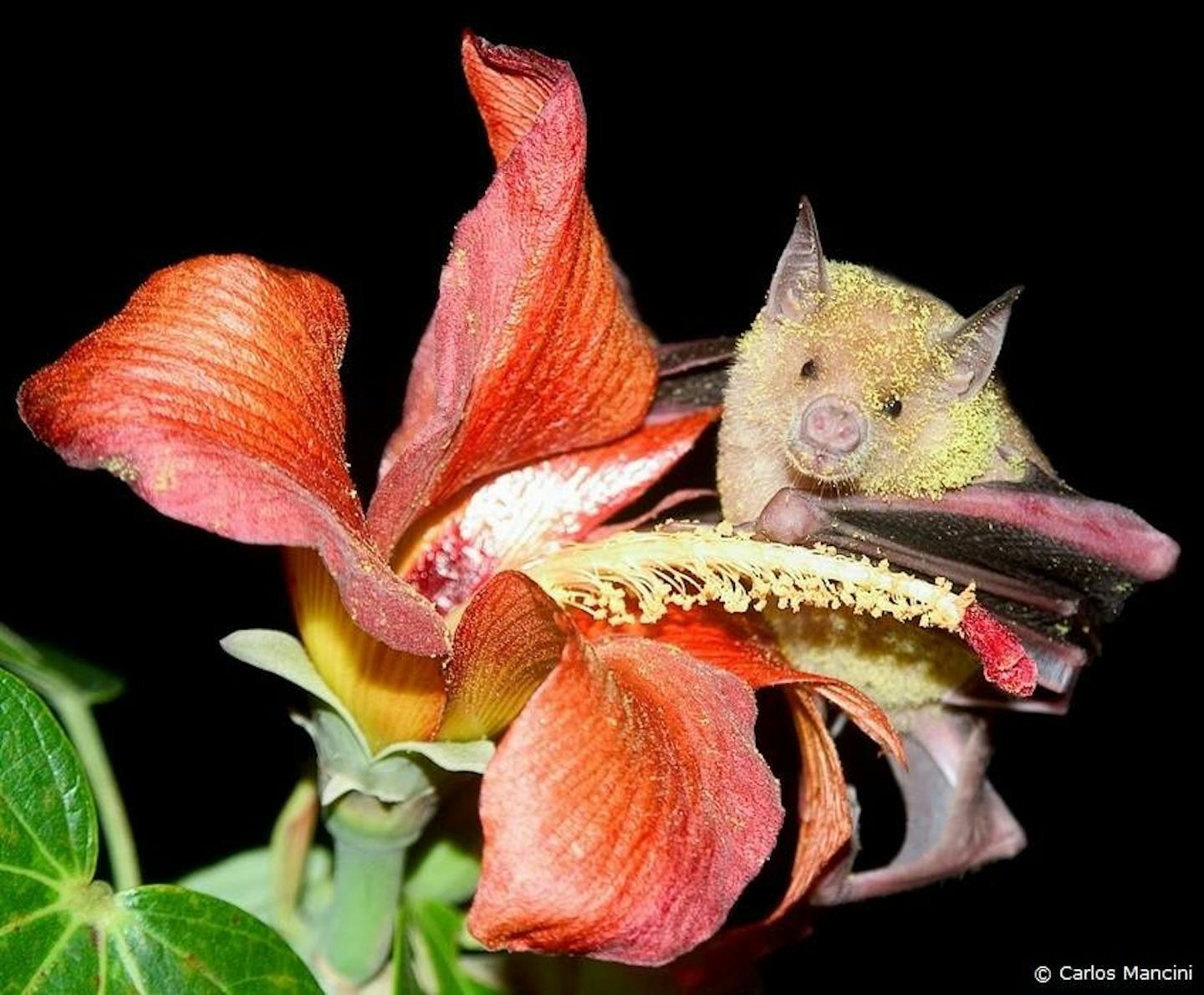Why certain native plants need the Cuban flower bat
One Earth’s “Species of the Week” series highlights the flagship species of each of the 844 unique ecoregions contained within Earth’s bioregions.
As the sun sets on the Caribbean islands of Cuba and Hispaniola, the region's caves are beginning to stir. Several thousand bats awake and emerge into the dark of the night to feed.
One species among the crowd is the Cuban flower bat (Phyllonycteris poeyi). Found nowhere else in the world, these bats are essential pollinators to many native plants on the islands.

Cuban flower bats are the flagship species of the Cuban Cactus Scrub ecoregion, located in the Caribbean Islands bioregion (NT26).
Built to pollinate flowers
Also known as the Poey’s flower bat, Cuban flower bats are medium-sized, weighing between 15 to 29 grams (0.53 to 1.02 oz), and have a wingspan of 29 to 35 centimeters (11 to 14 in). Females are significantly smaller than males, but both sexes have a glossy, greyish-white fur coat.
The tongue of the Cuban flower bat is exceptionally long and covered in hairlike structures that angle towards the mouth. This design allows the bat to reach deep into blossoming buds to pull out nectar with their entire tongue, not just the curl at the end.
Feeding primarily on the sugar-rich pollen from native plant species of the region, Cuban flower bats help promote the high degree of biodiversity found in their ecosystem. A flowering vine species called Marcgravia evenia is endemic to Cuba and relies heavily on bats for pollination, so much so that it sends out a ‘bat signal.’
This plant has evolved disc-shaped leaves that suspend above a ring of flowers, resembling a satellite dish, precisely what it does. The shape acts as a reflector for the biosonar, or echolocation, emitted by the animal. With this design, the Cuban flower bats can find the plants with greater ease and pollinate them with more frequency.
Slow in flight, but social in nature
Unlike most bat species, Cuban flower bats have softer but longer echolocation calls, lasting up to seven seconds and no more than 50 kilohertz. They also fly no faster than 6.7 kilometers per hour (4.2 mph), and the shape of their wings suggests that they cannot hover in place well.
Social creatures, Cuban flower bats fly in groups of up to thirty individuals during the night and are known to roost in their caves with other species of bats, such as the Cuban fruit-eating bat and the buffy flower bat. Sticking in groups helps them avoid predators like barn owls, stygian owls, and Cuban boas.
Little is known about the mating habits of Cuban flower bats, but breeding is thought to occur once a year, around December. Females give birth to a single, hairless infant weighing around 5 grams (0.2 oz).
Saving the species
Due to human development and the explosion of invasive and domestic vegetation on the island, many native plant species are in decline. With fewer resources available to Cuban flower bats, their population is also reduced.
Safeguarding the Cuban flower bats’ habitat is the best way to help protect this species. Preserving and restoring 50% of lands and oceans is also one of One Earth’s three pillars in solving the climate crisis, along with a transition to 100% renewable energy and a shift to net-zero food systems.
The dual issues of climate change and biodiversity loss can be significantly improved through nature conservation and give species like the Cuban flower bat a fighting chance for survival.
Interested in learning more about the bioregions of Central America? Use One Earth's interactive Navigator to explore bioregions around the world.
Launch Bioregion Navigator


